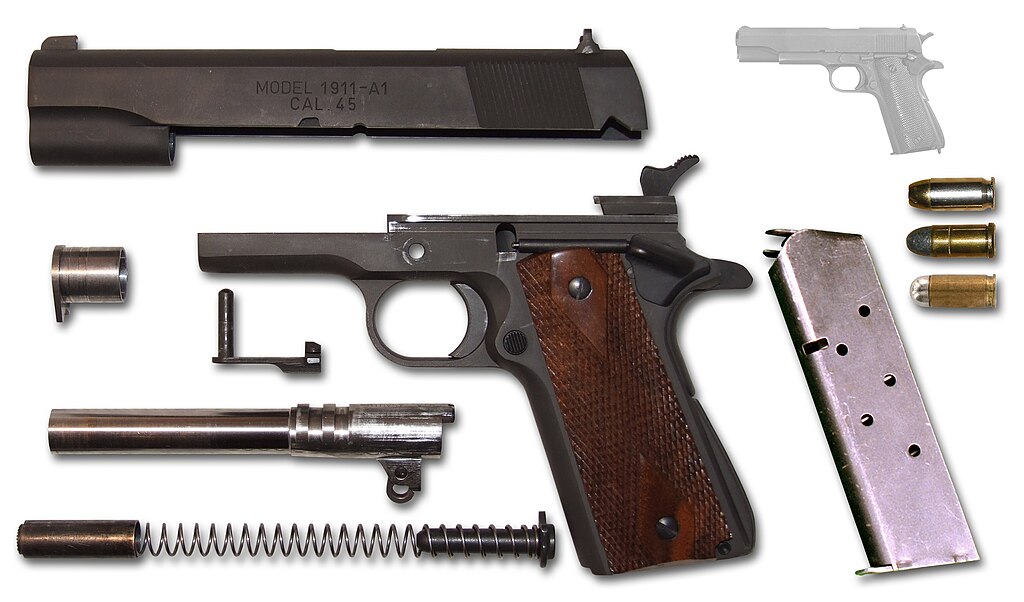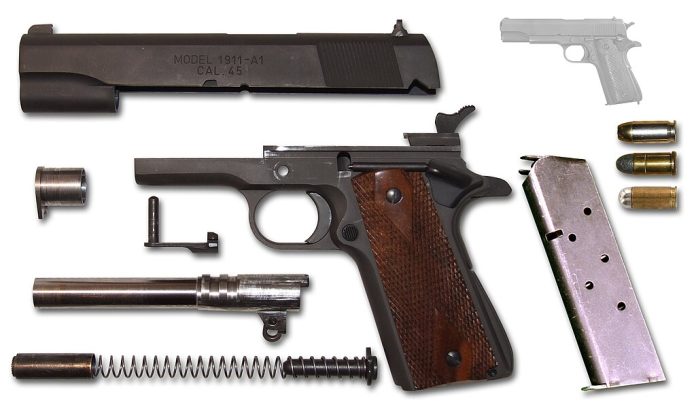
“Old soldiers never die; they just fade away,” declared General Douglas MacArthur at one time. In the firearms universe, there are some models that won’t even fade they are as essential today as the day they first debuted on the scene. These are guns that have risen above mere utility to become lasting symbols of engineering, cultural heritage, and fighting dependability.
From the trenches of World War I to the ranges and hunting fields of the present day, certain guns have remained impervious to the vagaries of time. They are not loved merely for their mechanical virtue but also because they bridge the generations of firearms owners. Steel-made or polymer-cast, they are a living exemplar of synergy between tradition and innovation that still inspires.
This overview gets personal and intimate with seven such symbols revolvers, rifles, and handguns whose designs have been around for centuries. Each entry unwinds to how a specific firearm ended up being etched in history and why it still remains relevant today in the 21st century.
1. Colt 1911: The Century-Old Combat Sidearm
Designed by John Moses Browning as a response to the U.S. military’s requirement for a superior sidearm, Colt Model 1911 was irreversibly linked with the .45 ACP cartridge. Officially adopted at the start of World War I, it endured during World War II, Korea, Vietnam, and well into the future. The best troops still use it today.

Its steel construction, clean trigger, and high bore grip all serve to improve accuracy and controlled recoil, particularly when loaded with heavy .45 ammunition. Although its issued 7-round magazine appears small by today’s standards, most shooters enjoy the 1911’s balance, accuracy, and aesthetic charm with their senses. With one of the most combat-tested pistols ever produced, it is still a mainstay in competition shooting and personal security.

2. Glock Pistols: Polymer Revolution
Gaston Glock entered the Glock 17 in the early 1980s and mixed and matched standard mechanical components with fresh polymer synthetic materials to design the first commercially viable polymer-framed handgun. Its light weight, large-capacity magazine, and resistance to corrosion impressed military as well as law enforcement agencies globally.
Over two-thirds of America’s police forces now issue Glocks, and the compact Glock 19 is the most omnipresent choice for carry. Its mushy stock trigger may be criticized, but the Safe Action system of the Glock and its liberal tolerances in field conditions have made it a byword for dependability. In terms of durability and ease of use, it reset the standard for a duty handgun.

3. Smith & Wesson and Colt Revolvers: Mechanical Sophistication
Prior to the dawn of the semiautomatics, Smith & Wesson and Colt revolvers were the benchmark for reliability and workmanship. Theirs were typically heavy-framed, with smooth double-action triggers, which proved to be fine sidekicks for lawmen and the general populace.
Guns such as the Smith & Wesson Model 10 and Colt Python are an example of mechanical perfection, tolerances and finish which shooters and collectors alike have a measure of respect for. Low capacity relative to contemporary pistols, but with fewer moving parts, no magazines, simplicity of the revolver equals reliable operation. For many shooters, such revolvers represent an age when the gun manufacturing industry was based on craftsmanship.

4. AR-15 and AK-47: Cultural and Functional Pillars

The AR-15 and AK-47 hold special places in the history of firearms. The modularity of the AR-15 permits maximum customization, as it is a favorite among sport shooters and professionals. The rugged simplicity of the AK-47 led to a reputation for reliability in extreme environments in which other rifles perish.
Both models impacted military strategy and target shooting culture for civilians. Both are well-liked not only due to their war-torn history but also because they are versatile whether for hunting, competition, or protection. They serve as an example of the balance of functionality, dependability, and popularity that very few rifles have managed.

5. Mauser 98: The Bolt-Action Benchmark
Paul Mauser’s 1898 design changed the bolt-action rifle. The controlled-round feed, large claw extractor, and dual locking lugs of the Gewehr 98 became a standard the industry followed by manufacturers everywhere. Ruger, Remington, and Winchester applied its principles to their own rifles.
Modern iterations like custom-fabricated guns with precision barrels and synthetic stocks prove its versatility. In testing, a modern Mauser 98 build scored sub-MOA groups, showing that this 127-year-old design holds its own today along with precision rifles of the modern era. Its impact is seen in hundreds of military and hunting rifles, and to many, it is still the gold standard of bolt-action design.
6. Winchester Model 94: The Lever-Action Legend
Produced in 1894 by John M. Browning, the Winchester Model 94 was the first repeating rifle ever made for the smokeless powder. Its strength, light weight, and compact size popularized it among settlers, lawmen, and hunters.
Chambered most famously in .30-30 Winchester, the Model 94 has been marketed more than 5.5 million copies. Models ranged from saddle-ring carbines to trappers’ short carbines, forms not drastically changed for more than a century. To some, it represents the timeless courage of the American frontier and the practicality of the lever-action rifle.
7. Rigby-Mauser Safari Rifles: Heritage in the Field
During the heyday of the African safaris, expert hunters used Mauser 98 actions in heavy-bore cartridges such as the .416 Rigby. Experts Harry Selby and Jim Corbett employed them to kill perilous game ranging from lions to man-eaters such as tigers.
John Rigby & Co.’s contemporary rendition of these rifles like the Big Game and Highland Stalker by Rigby enables hunters to enjoy the same combination of reliability and sophistication. With ½-MOA accuracy and constructed to the harsh requirements of the wild, these rifles continue a tradition that stretches continents and generations.
The continued popularity of these guns is no accident. Each one is a convergence of design genius, practical useability, and cultural relevance. They are not merely tools; they are touchstones of past and present, proof that true engineering brilliance can withstand the test of decades or even centuries. Amid all the world-changing tech, these guns serve as a reminder that there are designs which do not need to be reinvented they simply need to be carried forward.


